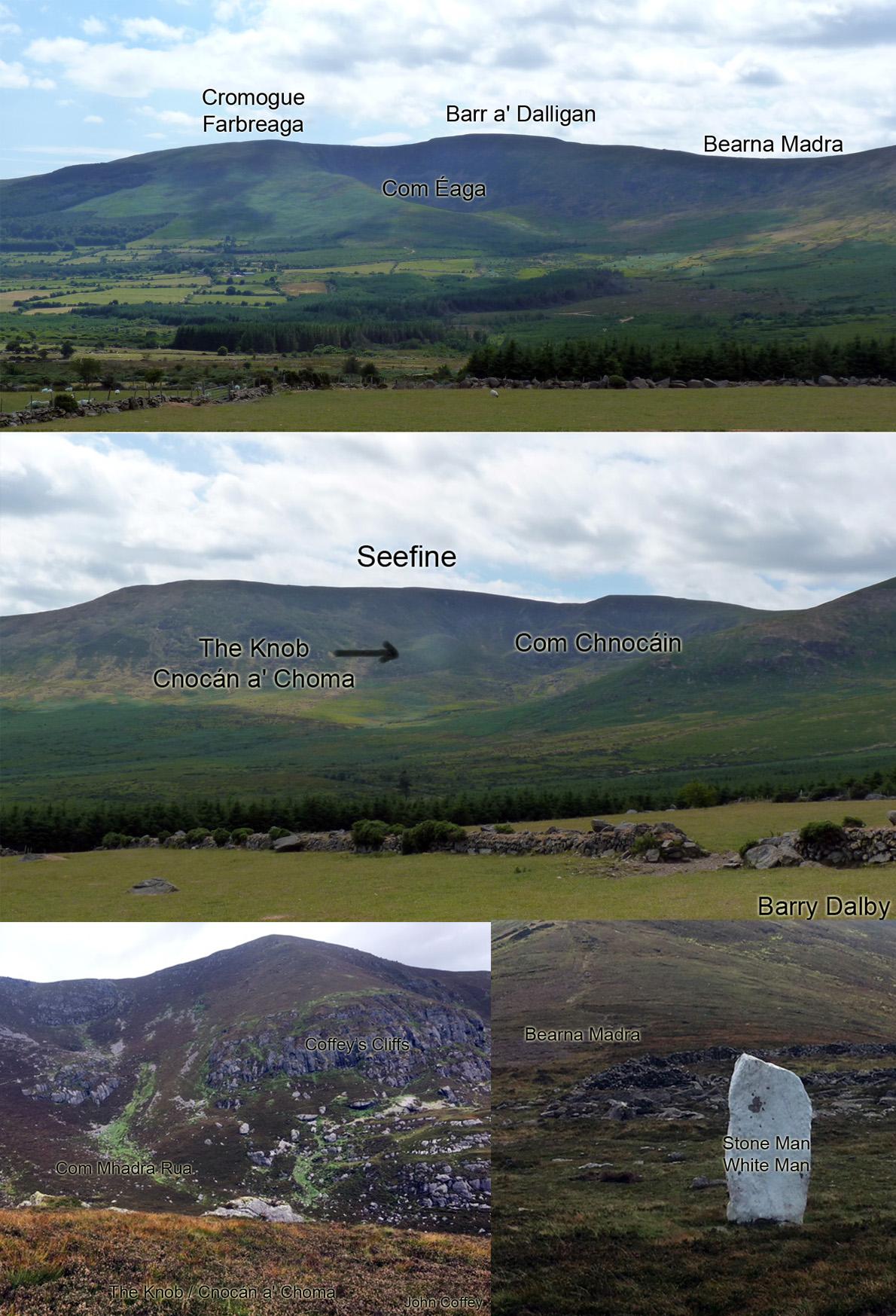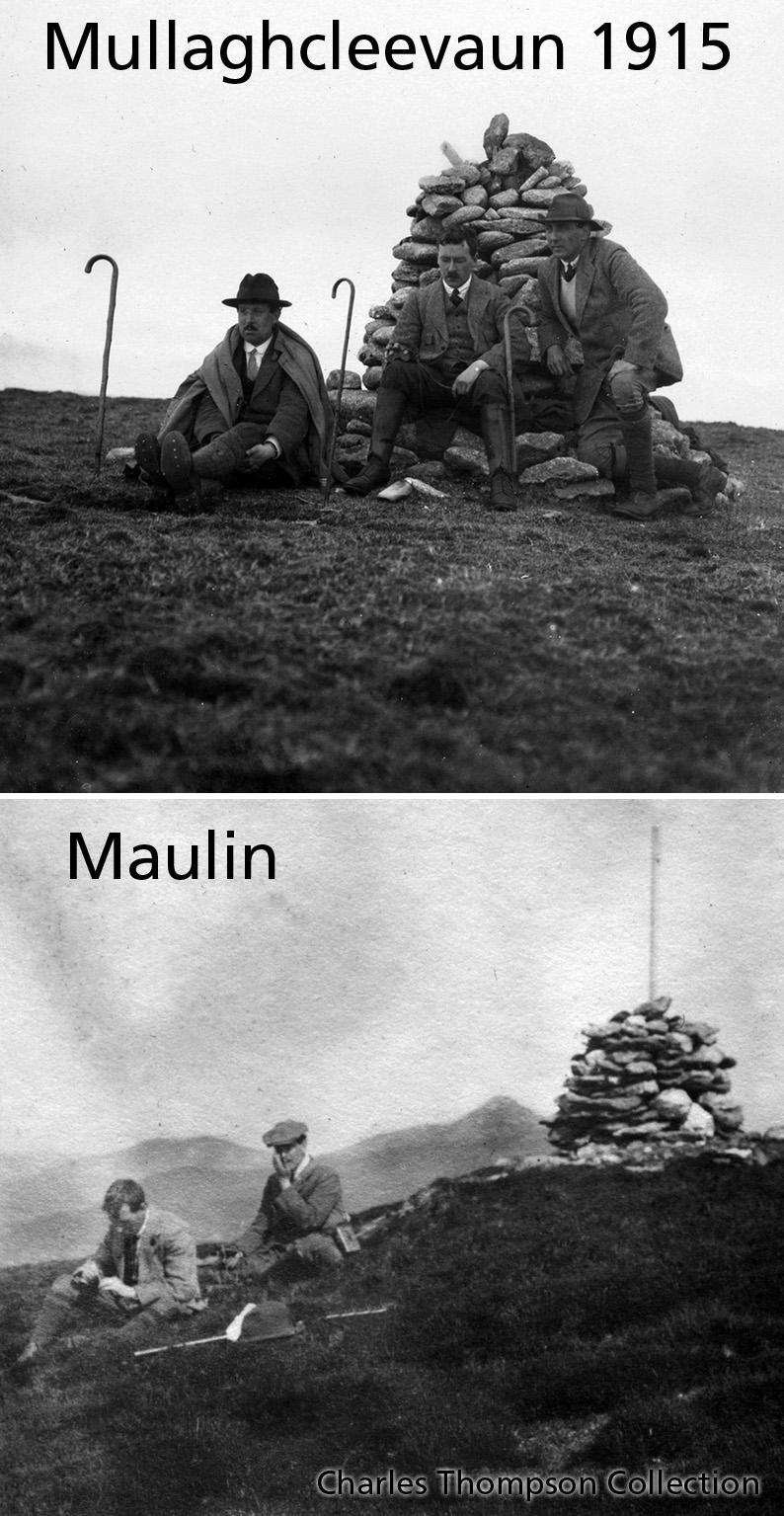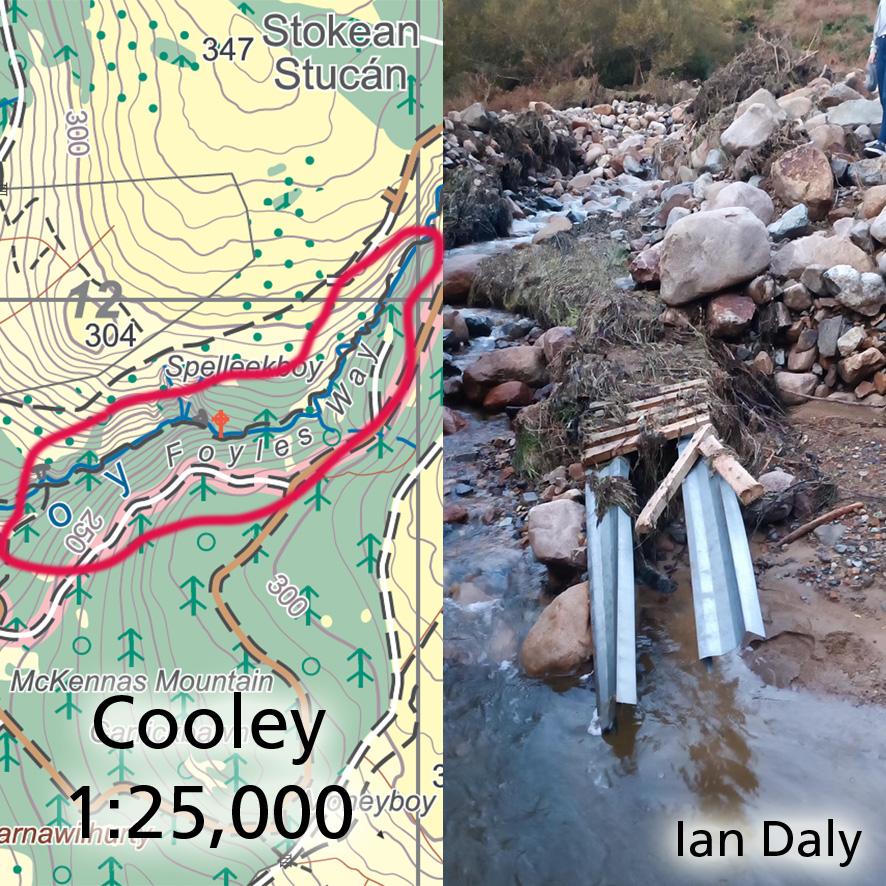Comeragh Placenames Part 2
Continuing north from the Mauma Road & Gap, there are fairly extensive areas of cut away mountain blanket bog. Some of this turf cutting is of recent decades but a lot is considerably older and parts of these hill slopes are known as Móin a’ Mhullaigh, the bog of the height. Climbing uphill we arrive on a boggy height, Farbreaga is the name used locally for this area. It’s a common enough term from the Irish, Fear Bréige ~ False Man which is applied to prominent bumps, cairns and the like which look like a human from afar. The new Comeragh map has two names here: firstly Barr a’ Dalligan, noted by Canon Power and also listed in Síle Murphy’s 1979 collection. Barr a’ Dalligan would refer to the high ground here where the Dalligan river rises. Secondly Cromogue which was the name of the survey station here in 1841, possibly from Cromóg meaning a hooked nose and after the cairn here, similar in meaning to Farbreaga as above.
Com Éaga is the deep benched coum below to the east, possibly meaning the coum of death or lifeless coum. A bog still worked for turf lies low in this coum, it’s called Crompán and known to be a dangerous spot.
Proceeding north from Barr a’ Dalligan, we follow down a narrow ridge to arrive in a saddle called Bearna Madra. When I was in school we were taught ‘madra’ was the Irish for a dog but in terms of older placenames ‘madra’ refers to foxes and even wolves. Bearna Madra is notable for the Stone Man or White Man, an ancient standing stone which has been painted white in recent decades. There is a legend concerning St.Declan and a hound which relates to this gap.
Proceeding north and uphill from Bearna Madra we arrive at the summit of Seefine with it’s rather ugly TV building. I’ve used this spelling as it accurately reflects local pronunciation. It’s likely from the Irish, Suí Fionn meaning roughly the fair height. Likewise there are sheep grazing slopes on these hills called Leaca Fhinn which is pronounced Lacka-vine, the fair or good grazing slopes.
There is a complex coum east of Seefine which I’ve labelled as Com Chnocáin, the coum of the little hill. This name is not in use locally now but it is recorded as Coumknockaun on OS maps and the name was noted by Canon Power in his inquiries. The name almost certainly derives from a small but distinct hill which is inset within the coum and which a distinctive feature. Local hillmen call this The Knob and it’s older Irish form was Cnocán a’ Choma, the little hill of the coum. A distinctive small upper coum near the Knob is called Com Mhadra Rua and this is backed by Coffey’s Cliffs, landowners in the area for many years.




